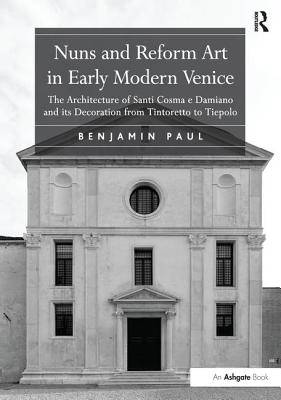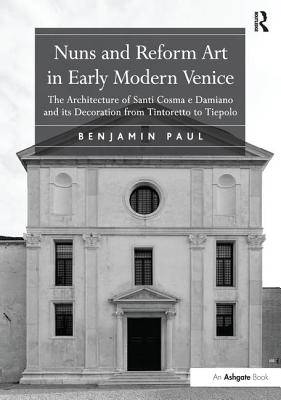
- Afhalen na 1 uur in een winkel met voorraad
- Gratis thuislevering in België vanaf € 30
- Ruim aanbod met 7 miljoen producten
- Afhalen na 1 uur in een winkel met voorraad
- Gratis thuislevering in België vanaf € 30
- Ruim aanbod met 7 miljoen producten
Zoeken
Nuns and Reform Art in Early Modern Venice
The Architecture of Santi Cosma E Damiano and Its Decoration from Tintoretto to Tiepolo
Benjamin Paul
Paperback | Engels
€ 71,95
+ 143 punten
Omschrijving
Decorated by Giovanni Buonconsiglio, Jacopo Tintoretto, Palma il Giovane, Sebastiano Ricci and Giambattista Tiepolo, the church of the former Benedictine female monastery Santi Cosma e Damiano occupies an outstanding position in Venice. The author of this study argues that from its foundation in 1481 to its dissolution in 1805, Santi Cosma e Damiano was a reform convent, and that its nuns employed art and architecture as a means to actively express their specific religious concerns. While on the one hand focusing, on the basis of extensive archival research, on the reconstruction of the history and construction of the convent, this study's larger concern is with the religious reform movement, its ideas concerning art and architecture, and with the convent as a space for female self-realization in early modern Venice.
Specificaties
Betrokkenen
- Auteur(s):
- Uitgeverij:
Inhoud
- Aantal bladzijden:
- 334
- Taal:
- Engels
Eigenschappen
- Productcode (EAN):
- 9781138272217
- Verschijningsdatum:
- 11/11/2016
- Uitvoering:
- Paperback
- Formaat:
- Trade paperback (VS)
- Afmetingen:
- 175 mm x 246 mm
- Gewicht:
- 619 g

Alleen bij Standaard Boekhandel
+ 143 punten op je klantenkaart van Standaard Boekhandel
Beoordelingen
We publiceren alleen reviews die voldoen aan de voorwaarden voor reviews. Bekijk onze voorwaarden voor reviews.











